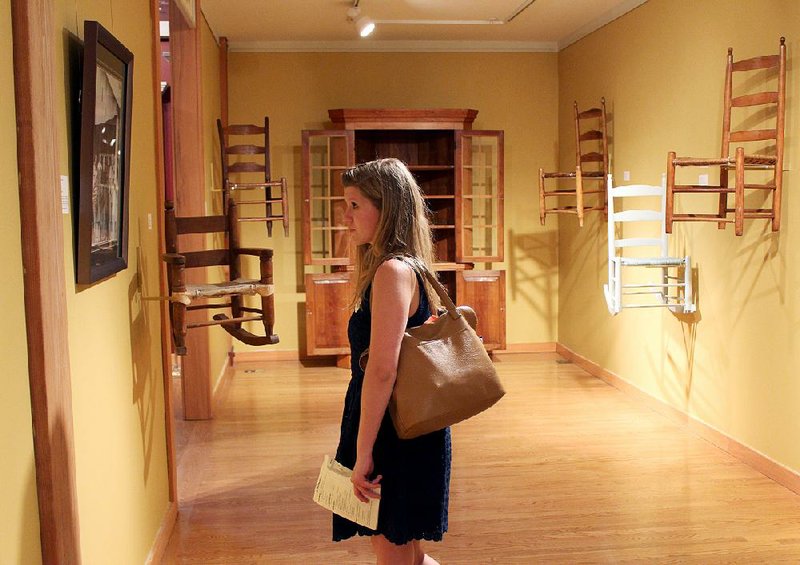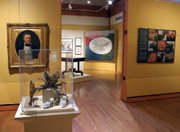It took nearly 30 years for curators at the Historic Arkansas Museum to compile a collection of decorative furniture, fine arts and tribal items made and used by some of Arkansas’ earliest settlers. What they ended up with was an extensive, ever-growing exhibit that showcases their decades of research.
The team went from county to county surveying private and public collections of Arkansans who descended from early European settlers and American Indian tribes to better understand Arkansas heritage. The group combed every census, newspaper and document they could get their hands on, including manufacturing records, to track descendants of early inhabitants.
The expansive research project collected Caddoan pottery, hand-crafted furniture, pen and ink drawings, oil paintings, weaponry and other works that were made in Arkansas and reflect a rich cultural heritage.
Deputy director and chief curator of the Historic Arkansas Museum, Swannee Bennett, debuted the collection, which he aptly dubbed Arkansas Made Gallery.
Bennett says that for centuries Arkansas and its inhabitants were portrayed negatively and often referred to as “backwoods.” He says the comments couldn’t be further from the truth.
“Our history seems to leave out the nonagrarian population - other populations of people thrived and grew,” he says. “We had art and artisans here, cabinetmakers, silversmiths and gunsmiths; people were interested in arts and people wanted fine things.”
It is most apparent in oil paintings of Colonial Arkansans, specifically a painting of Marie Felicite Valliere-Vaugine, attributed to Jose de Salazar, a famous painter in the Colonial South. De Salazar completed the painting for the Valliere family of Arkansas Post and “it is the earliest known painting of a Colonial Arkansan that we can identify,” Bennett says.
Items dating to the early 1800s, which include the earliest documented Indian-made cross-stitching sampler, are among those in the exhibit. The browning linen square with red, blue, green and off-white stitching was created at the Cherokee Mission School in Dwight during the “Americanization” of the Indians. Cherokee girls were taught to read, spell, sew and count using the samplers as a component of their studies.
“We are now making the Native American presence in arts available in Arkansas,” Bennett says.
The Quapaw, the Caddo and the Osage were three historical tribal groups indigenous to Arkansas in the 17th and 18th centuries, but some of the oldest pieces in the collection are earth-tone Caddoan pottery that dates back to the 15th and 16th centuries.
The earthenware was excavated from Caddoan sites in southwest Arkansas, which yielded several smooth, circle- and scroll-engraved hollow vessels that are believed to be storage pots for grain and seeds. Rich brown bowls and black knob-type vessels are also a part of the display.
A 19th-century dance rattle that was used in tribal ceremonies and closely resembles a fried turkey leg was made from an animal’s bladder with a stylized handle in the shape of an eagle. A pair of glass-beaded moccasins believed to have been made by Quapaws reflects trade between tribes and European traders.
While the collection is permanent, Bennett says his team is always looking for new items. They are currently seeking objects created in Arkansas prior to 1950 and encourage Arkansans who may have heirlooms to contact the research office.
“We have worked to become Arkansas’ premier repository for Arkansas-made decorative, mechanical and fine art,” Bennett says.
The Historic Arkansas Museum, 200 E.Third St., Little Rock. Hours: 9 a.m.-5 p.m. Monday-Saturday, 1-5 p.m. Sunday. Admission is free. Tours of the historic grounds are $2.50 for adults; $1 for children under 18; $1.50 for senior citizens. For more information regarding the Arkansas Made Gallery visit arkansasmade.org and historicarkansas.org or call (501) 324-9351. Arkansas Made research office (501) 324-9376.
Style, Pages 47 on 08/11/2013


